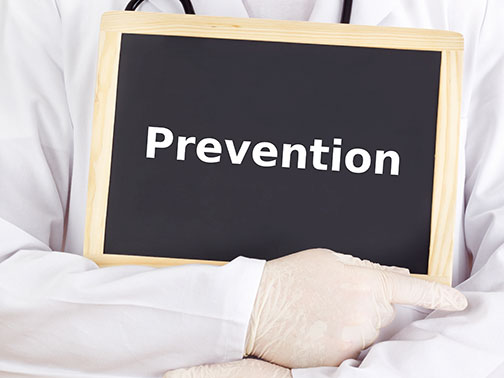

The Golden Triad of EPD in Stroke: Prevention (Part 2)
Apart from early prediction or detection of stroke, and its related outcomes, it is also imperative to ensure the primary prevention of stroke. This is of relevance from a public health perspective because ensuring the health of billions of people around the world is much more feasible and practical in the attainment of universal health coverage.
Prevention is key, especially among high-risk, vulnerable groups such as people with limited accessibility to healthcare and quality rehabilitation services, those with comorbidities, compromised overall health and the aged population – to name a few. The latest evidence reiterates the importance of physical activity, especially walking for 30 minutes per day, as a very good (54%) preventative measure reducing the risk of early death due to stroke or other causes. This study, led by Dr. Joundi and colleagues, at the University of Calgary, Canada, included 895 people (average age of 72 years) with a history of stroke and 97,805 (average age of 63 years) with no history of stroke. Upon follow-up within the stroke group, researchers found that survivors who exercised at least the equivalent of 3-4 hours of walking per week had lower mortality rates when compared with survivors who did not.
Another factor or “warning” that must be taken seriously is the occurrence of a Transient Ischemic Attack (TIA) or commonly known as a “mini-stroke”. This occurs when one of the arteries supplying blood to the brain is blocked for a brief period of time. The onset of a TIA can be a pivotal “alarm” making one aware of the impending danger of sustaining a more severe stroke, if not treated with caution.
The recent 2021 Guideline for the Prevention of Stroke in Patients With Stroke and Transient Ischemic Attack introduced a new recommendation which advises health care professionals to perform diagnostic tests that can determine the cause of the TIA/ stroke within 48 hours of symptom onset.
For patients who have survived a stroke or TIA, the secondary prevention guidelines recommend as follows (quoted from the guidelines):
“ 1) Managing vascular (blood vessel related) risk factors, especially high blood pressure, as well as Type 2 diabetes, cholesterol, triglyceride levels and not smoking
2) Limiting salt intake and/or following a Mediterranean diet
3) If capable of physical activity, then engaging in moderate-intensity aerobic activity for at least 10 minutes four times a week or vigorous-intensity aerobic activity for at least 20 minutes twice a week”
Another recent interesting finding that might be of relevance to the prevention of stroke recurrence among both – the survivor and healthy populations is the importance of music. A study conducted at the University of Helsinki and the Turku University Hospital, compared effects of listening to vocal music, audiobooks and instrumental music on the structural and functional recovery of the language network in the brain of patients with acute stroke. Additionally, the study also followed-up after a 3-month period to investigate the links between changes and language recovery.
Findings from the study indicated that listening vocal music improved the recovery of the structural connectivity of the language network in the left frontal lobe when compared to listening to audiobooks. This finding sheds light on the very “plastic” nature of the brain to constantly rewire and reorganise itself in order to continue functioning. It might be of relevance to the general public as a preventative measure. Past evidence also reflects findings of reduction in blood pressure, heart rate and cortisol levels (stress hormone) with specific types of music – all of which are important predictors of stroke occurrence and outcome.
The prevention and detection of stroke are inter-linked to each other and will be incomplete without an emphasis on the “early” nature of interventions – thereby making it the ‘golden triad’ that is essential to combat the permanent and disabling impact of stroke.

HPHR.org was designed by ComputerAlly.com.
Visit HPHR’s publisher, the Boston Congress of Public Health (BCPH).
Email communications@bcph.org for more information.

Click below to make a tax-deductible donation supporting the educational initiatives of the Boston Congress of Public Health, publisher of HPHR Journal.![]()